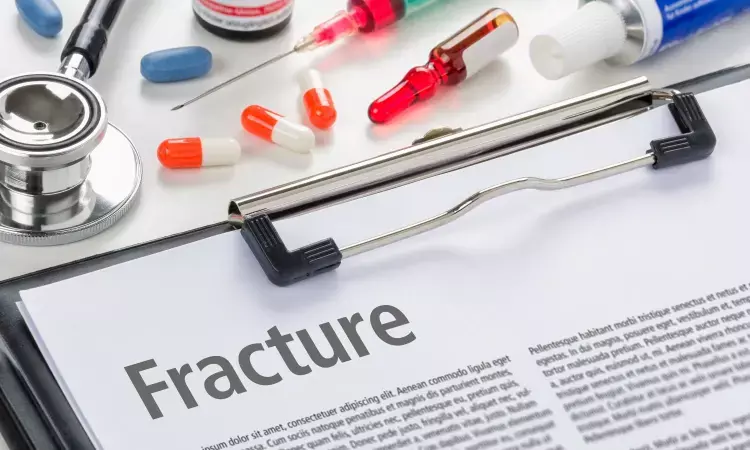- Home
- Medical news & Guidelines
- Anesthesiology
- Cardiology and CTVS
- Critical Care
- Dentistry
- Dermatology
- Diabetes and Endocrinology
- ENT
- Gastroenterology
- Medicine
- Nephrology
- Neurology
- Obstretics-Gynaecology
- Oncology
- Ophthalmology
- Orthopaedics
- Pediatrics-Neonatology
- Psychiatry
- Pulmonology
- Radiology
- Surgery
- Urology
- Laboratory Medicine
- Diet
- Nursing
- Paramedical
- Physiotherapy
- Health news
- Fact Check
- Bone Health Fact Check
- Brain Health Fact Check
- Cancer Related Fact Check
- Child Care Fact Check
- Dental and oral health fact check
- Diabetes and metabolic health fact check
- Diet and Nutrition Fact Check
- Eye and ENT Care Fact Check
- Fitness fact check
- Gut health fact check
- Heart health fact check
- Kidney health fact check
- Medical education fact check
- Men's health fact check
- Respiratory fact check
- Skin and hair care fact check
- Vaccine and Immunization fact check
- Women's health fact check
- AYUSH
- State News
- Andaman and Nicobar Islands
- Andhra Pradesh
- Arunachal Pradesh
- Assam
- Bihar
- Chandigarh
- Chattisgarh
- Dadra and Nagar Haveli
- Daman and Diu
- Delhi
- Goa
- Gujarat
- Haryana
- Himachal Pradesh
- Jammu & Kashmir
- Jharkhand
- Karnataka
- Kerala
- Ladakh
- Lakshadweep
- Madhya Pradesh
- Maharashtra
- Manipur
- Meghalaya
- Mizoram
- Nagaland
- Odisha
- Puducherry
- Punjab
- Rajasthan
- Sikkim
- Tamil Nadu
- Telangana
- Tripura
- Uttar Pradesh
- Uttrakhand
- West Bengal
- Medical Education
- Industry
Curettage of Atypical cartilage tumor tied to overall increased fracture risk among males with larger lesions

Atypical cartilage tumor (ACT), which are benign growths, are commonly found in the medullary cavity of long bones. They are often discovered during the diagnostic process for musculoskeletal issues. It was previously classified as grade 1 chondrosarcoma, but in 2013, WHO changed the nomenclature due to its benign clinical behaviour and good prognosis, with a 5-year survival rate of 83-99%.
A recent study published in the Journal of Orthopaedic Surgery and Research has concluded that the curettage of ACT results in an overall fracture risk of 6%. This risk is particularly increased for males with larger lesions.
The debate on the curettage of ACT is ongoing. Curettage causes bone defects that lead to fractures. This study aimed to determine the postoperative fracture risk after curettage of chondroid tumours and patient-specific factors affecting fracture risk.
Two hundred ninety-seven adult patients who underwent curettage with ACT followed by phenolisation and augmentation were evaluated retrospectively. Variables included sex, age, tumour size, location, augmentation type, and plate fixation. Radiologically, the presence of a fracture was diagnosed. The patients had at least 90 days of follow-up.
Key findings from the study are:
· The study had 183 females and 114 males, with a median follow-up of 3.2 years.
· The mean diameter of the lesions was 4.5 cm.
· 259 Patients received augmentation with allograft bone, 11 with Polymethyl methacrylate (PMMA) and 27 did not receive augmentation.
· Overall fracture risk was 6%.
· For postoperative fractures, the male sex and lesion size larger than 3.8 cm were risk factors.
They said our study demonstrates that augmentation using allograft bone chips or PMMA after intralesional curettage of an ACT does not influence fracture risk.
A low number of fractures prohibited stratified or multivariable analysis to account for potential confounding; the window size, insufficient power and predefined follow-up of 90 days were some of the study's limitations.
Our study included a large group (297 patients) with a prolonged follow-up period. This study can function as a base for further research toward active surveillance, given the high postoperative fracture risk, especially for men with large tumor lesions.
This research serves as a foundation for future investigations into active surveillance, given the elevated risk of postoperative fractures, particularly in men with large tumor burdens, they said.
Reference:
Krebbekx, G.G.J., Fris, F.J., Schaap, G.R. et al. Fracture risk after intralesional curettage of atypical cartilaginous tumors. J Orthop Surg Res 18, 851 (2023). https://doi.org/10.1186/s13018-023-04215-4
BDS, MDS in Periodontics and Implantology
Dr. Aditi Yadav is a BDS, MDS in Periodontics and Implantology. She has a clinical experience of 5 years as a laser dental surgeon. She also has a Diploma in clinical research and pharmacovigilance and is a Certified data scientist. She is currently working as a content developer in e-health services. Dr. Yadav has a keen interest in Medical Journalism and is actively involved in Medical Research writing.
Dr Kamal Kant Kohli-MBBS, DTCD- a chest specialist with more than 30 years of practice and a flair for writing clinical articles, Dr Kamal Kant Kohli joined Medical Dialogues as a Chief Editor of Medical News. Besides writing articles, as an editor, he proofreads and verifies all the medical content published on Medical Dialogues including those coming from journals, studies,medical conferences,guidelines etc. Email: drkohli@medicaldialogues.in. Contact no. 011-43720751


